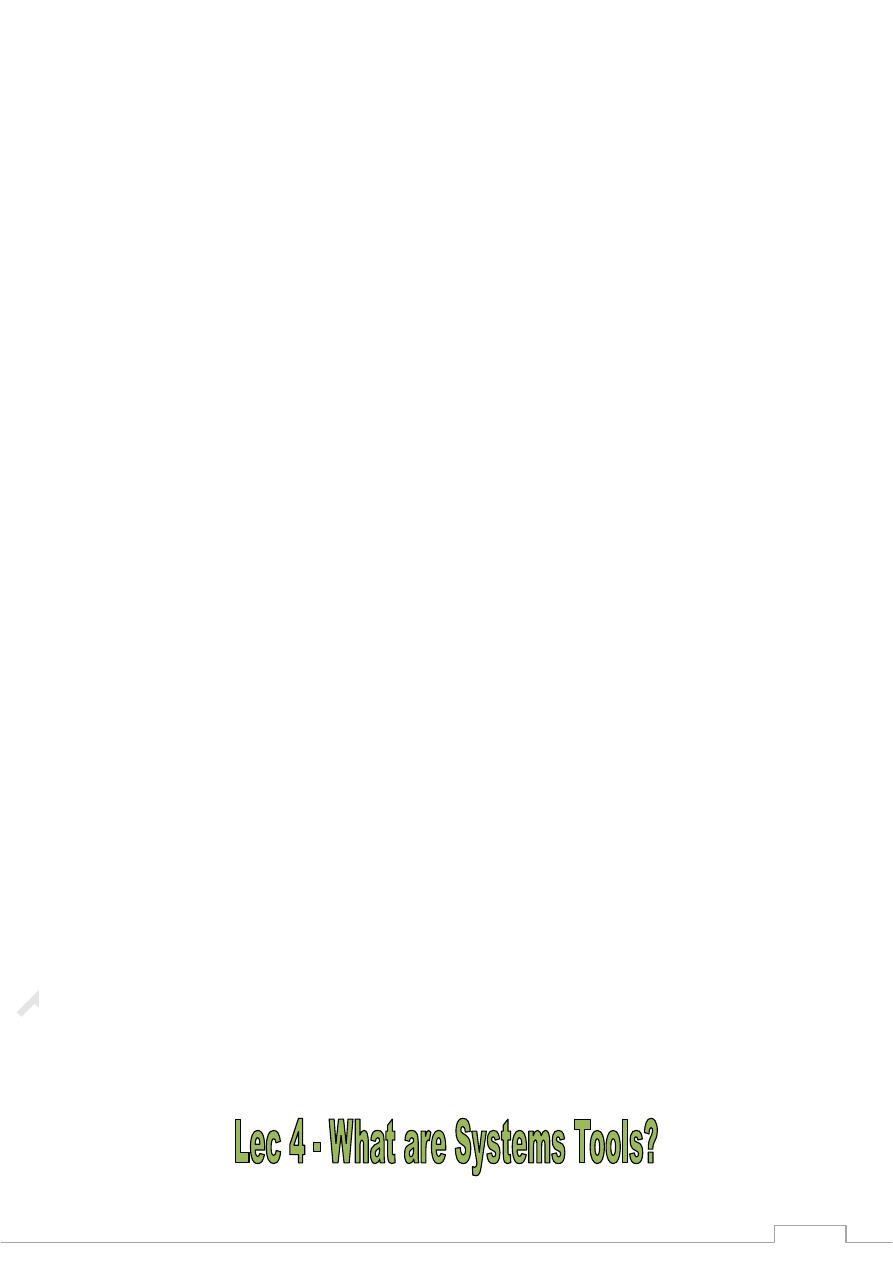
16
Depending on what option you choose, you're presented with various ways to conduct your
search.
Let's say you choose to search
for a particular
file. The Search Companion prompts you with questions to help
you refine your search. It's helpful if you can remember
something about the missing file such as all or part of the
filename, file type, when you last worked with the file, a word
or phrase in the file, or what drive it's on, etc. The more criteria
contained in your search, the more refined the search becomes.
To search using the Search Companion:
Enter as much information as you can remember into the
Search Companion.
Click the drop down arrows to add more criteria.
Use the Back button if necessary.
Click Search.
Using the Search Companion (Continued)
Once you click Search, the Search Companion tells you what
it's searching.
Your search results display in the white space.
The Search Companion tells you when the search is complete
and prompts you with more Search options.
If your search is complete, click Yes, finished searching.
Simply double-click the file to open it.
Finding a file can take seconds, minutes or much, much longer
depending on the type of search and where you look. If you
don't find the file or folder you're
looking for on the first try, type in a different name and/or location.
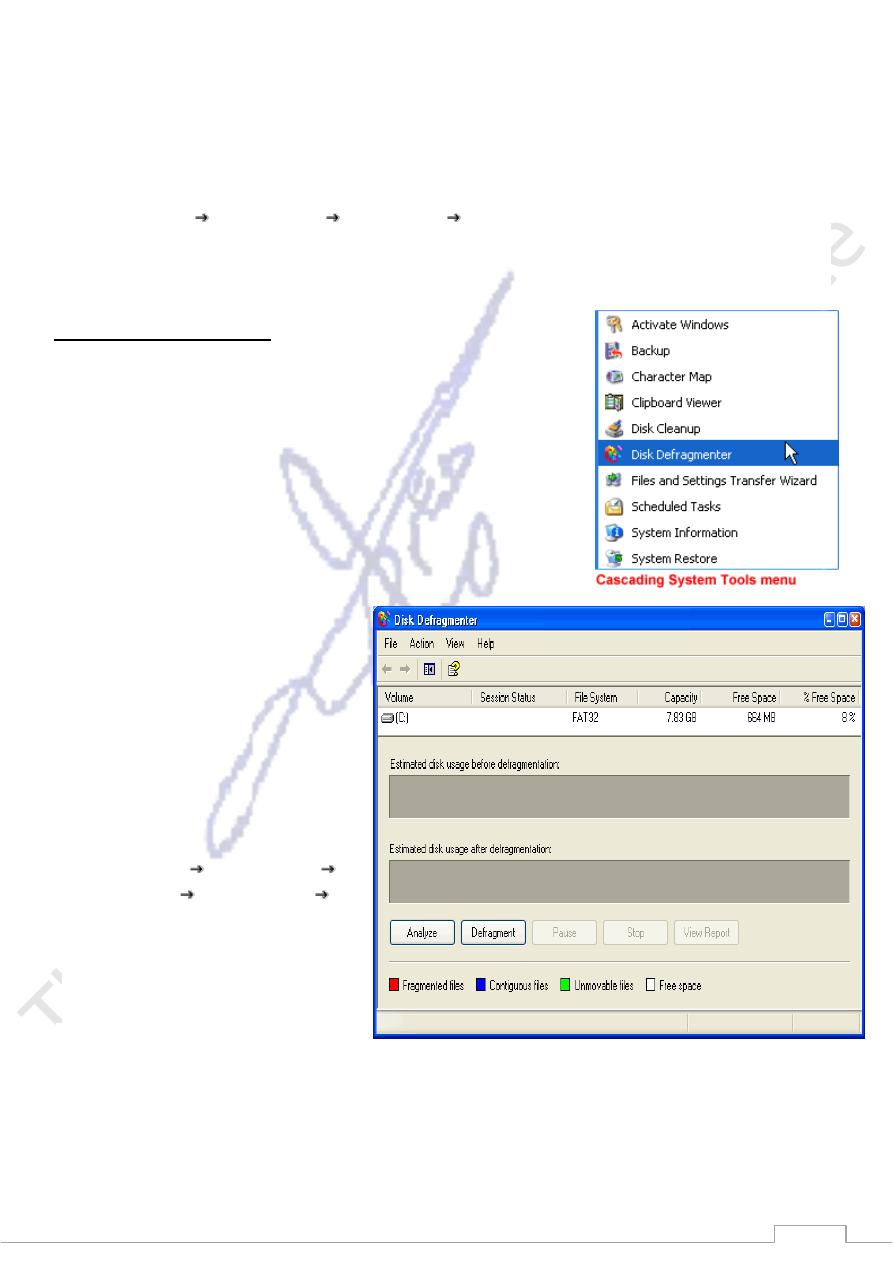
17
Do some basic maintenance from time to time to keep Windows XP running smoothly.
Luckily, Windows XP provides you with some basic tools to make the maintenance process as
painless as possible. You can access these tools via the System Tools menu.
To open the System Tools menu:
Choose Start All Programs Accessories System Tools.
A cascading System Tools menu opens
.
Disk Defragmenter
All Windows XP computers have at least one hard disk. The
hard disk acts as your computer's storage area. Almost
everything installed on your computer - applications, files,
folders, and operating system - is stored here.
With general use, (creating new files, deleting files, installing
new software, etc) your hard disk can become fragmented.
This means that parts of the same disk file become scattered
over different areas of the disk. A fragmented hard disk slows
down your computer and hinders its
performance.
To keep your hard disk running
smoothly, you must routinely
defragment or "defrag" the hard
disk. The Disk Defragmenter tool
can help you do this.
To use Disk Defragmenter:
Choose Start All Programs
Accessories System Tools
Disk Defragmenter.
The Disk Defragmenter opens.
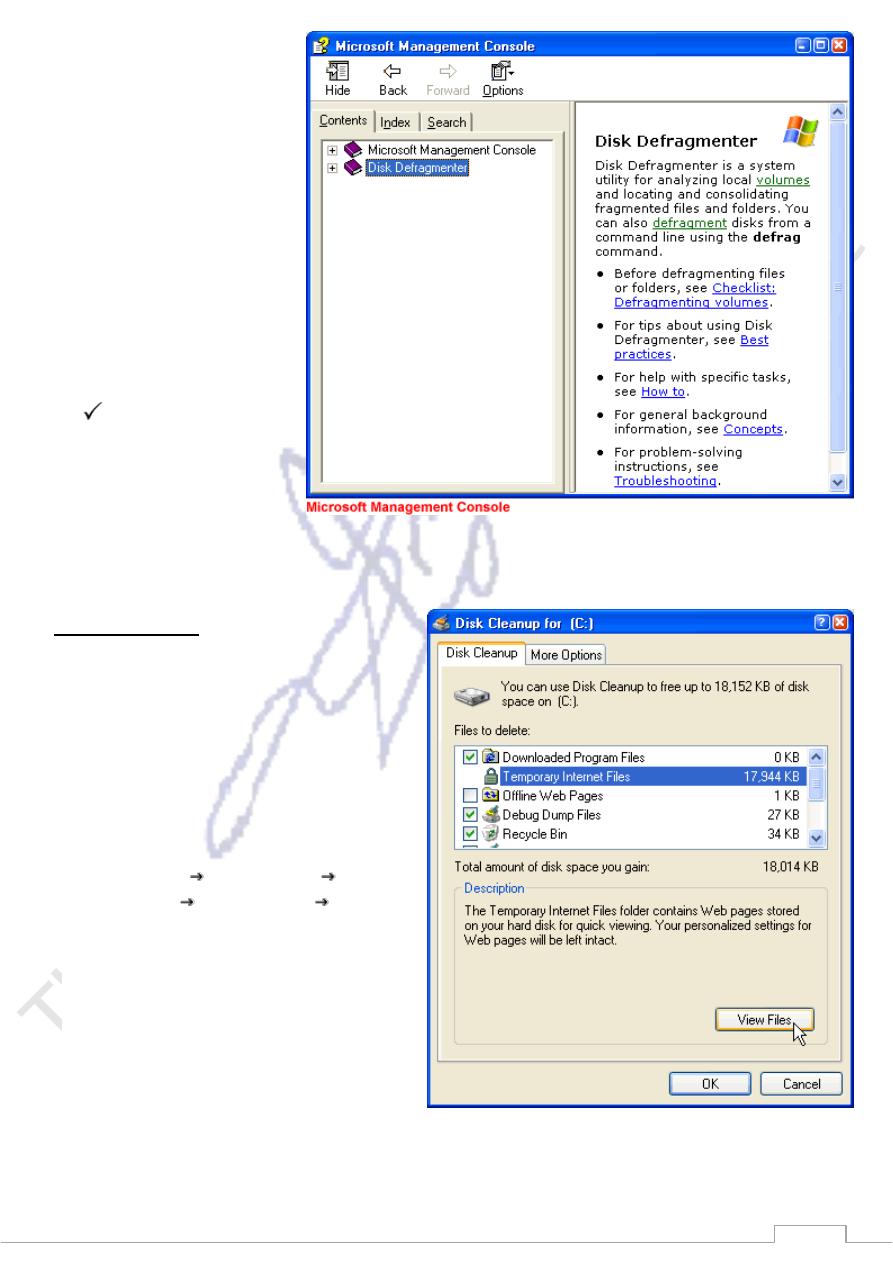
18
To open Microsoft
Management Console:
Open Disk
Defragmenter.
Open the Action menu.
Click Help.
A Microsoft
Management Console
opens and explains how
to run Disk
Defragmenter.
Note: You may need
to be logged in as an
administrator or as a
member of the
Administrators group to
perform some tasks associated with the Disk Defragmenter. Disk Defragmenter should
be run every three months.
Disk Cleanup
Disk Cleanup is another tool that helps
keep Windows XP operating as it should. It
inspects your hard disk and looks for files
that can be safely deleted. Deleting
unnecessary files frees up valuable disk
space.
To run Disk Cleanup:
Choose Start All Programs
Accessories System Tools Disk
Cleanup.
The Disk Cleanup window opens. Click
the Disk Cleanup tab if it's not showing.
Disk Cleanup lists several potential files
that can be deleted and the amount of
disk space you'll gain by emptying each
one.
To learn more about a file category, click it and click the View Files button. A description
appears.
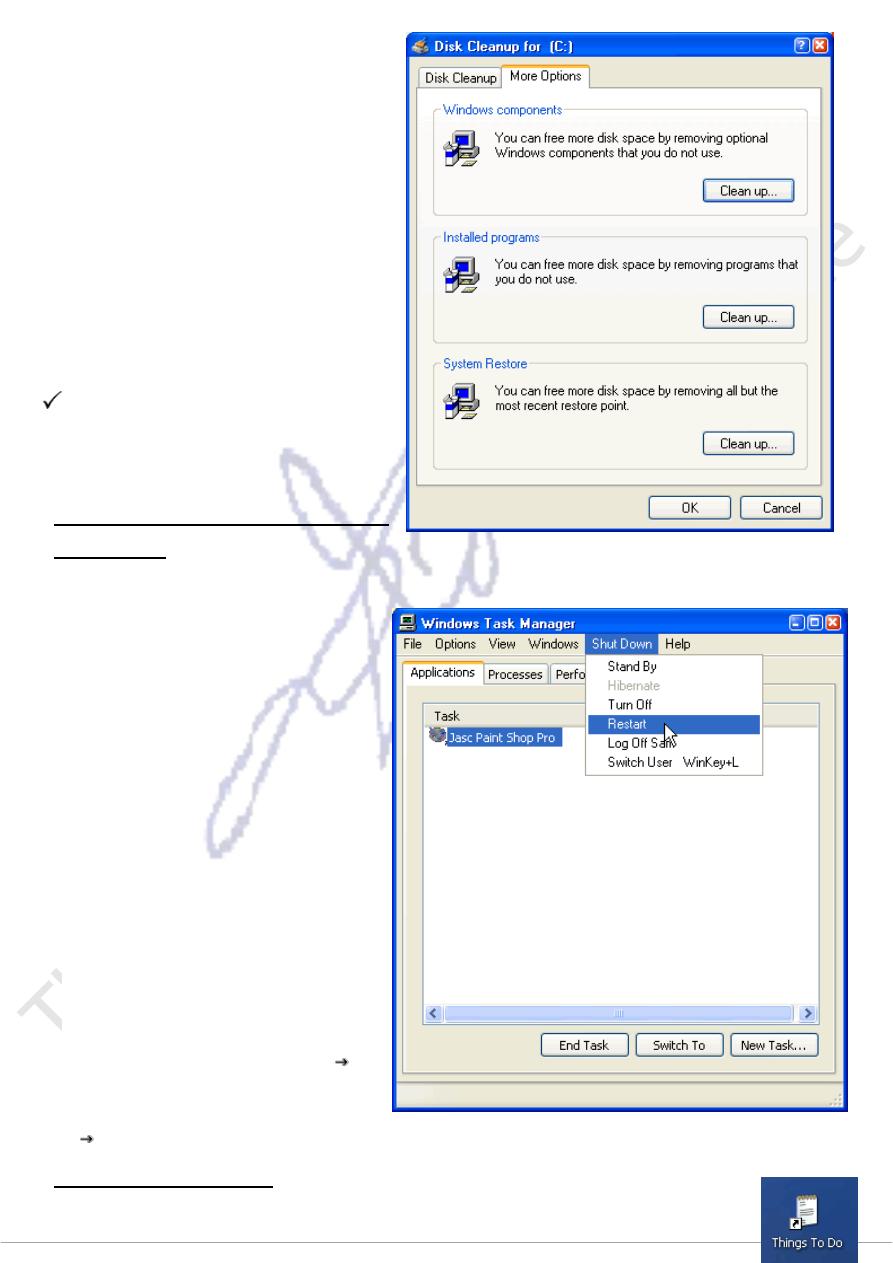
19
Click the checkboxes next to the
categories you want to delete and
click OK.
A dialog box appears, stating, "Are
you are sure you want to perform
these actions?" Click Yes or No as
appropriate.
Disk Cleanup (Continued)
The More Options tab gives you even
more disk cleanup options.
Note: It's recommended that you run
Disk Cleanup every three months
Dealing with an Unresponsive
Computer
While doing regular maintenance on your computer should keep it running smoothly, your
computer may occasionally freeze up
or become unresponsive to the click of
a mouse or keyboard.
If your computer freezes, try
waiting it out. Sometimes it takes
your computer a few seconds to
complete a task.
OR
Press the ESC on your keyboard.
OR
Press Ctrl + Alt + Delete on your
keyboard. The Windows Task
Manager opens. Here, monitor
applications, processes,
performance, networking, and
users. If you need to restart your
computer, choose Shut Down
Restart. If you need to turn off
your computer, choose Shut Down
Turn Off.
What is a Shortcut?
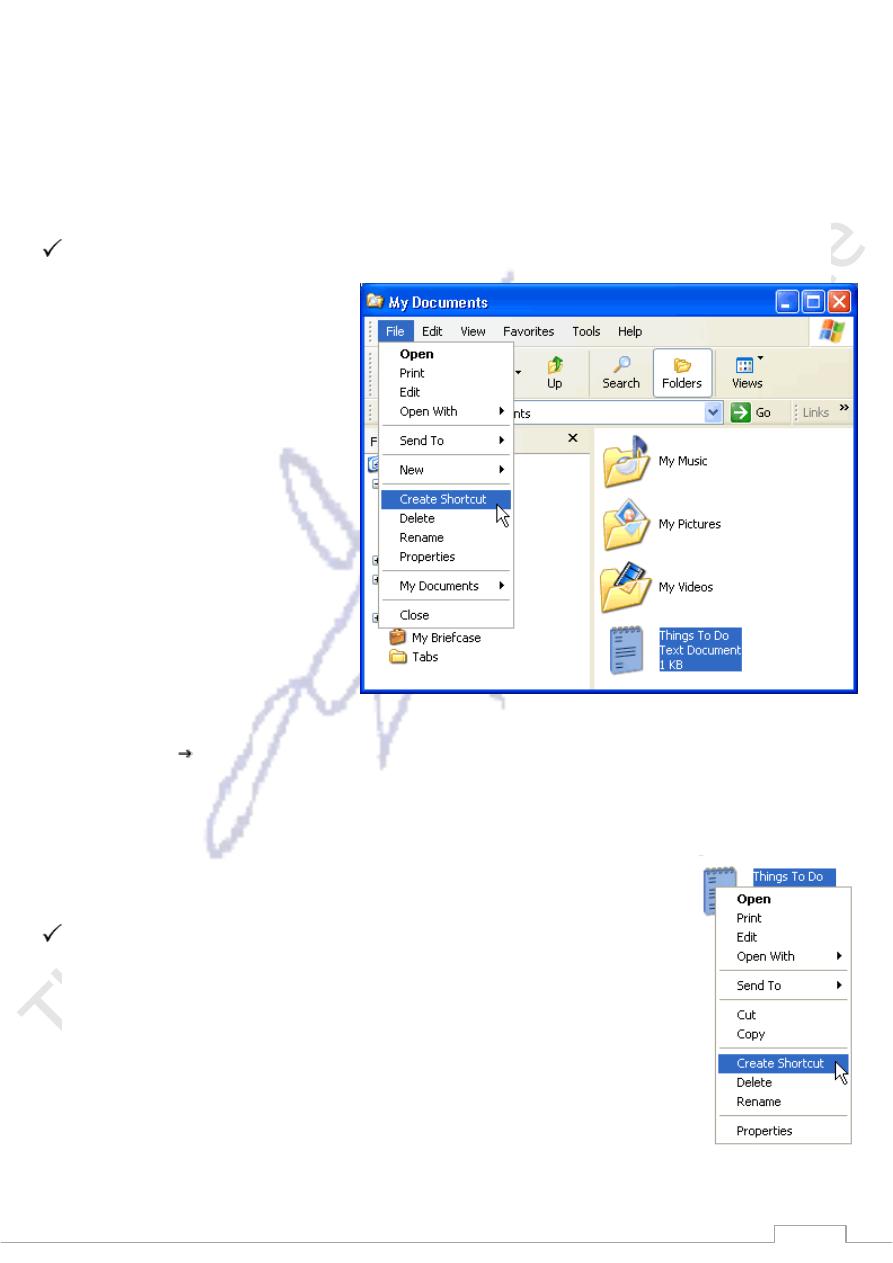
21
A shortcut offers a way of doing a task more quickly such as starting a program or accessing a
document. The shortcut icon has a small arrow in the left corner to help you distinguish it
from the actual icon that represents programs and files.
The icon above is a desktop shortcut for the Things to Do document that's actually stored in
this particular user's My Documents folder.
When you delete a shortcut, the original item still exists on your computer in its original
location.
Adding a Shortcut
In this lesson, you will learn three
ways to create a shortcut. Choose
the one that works best for you.
To add a shortcut to the desktop
using Windows Explorer or My
Computer:
Open Windows Explorer or My
Computer.
Double-click a drive or folder.
Click the file, program, or
folder for which you want to
make a shortcut. The item
darkens when you select it.
Choose File Create Shortcut.
Resize the window so you can see the desktop.
Hover the mouse pointer over the shortcut icon and hold down the left mouse button
and drag the shortcut onto desktop (in the left pane).
Release the left mouse button and a shortcut is moved to the
desktop.
Alternatively, press Ctrl + Shift while dragging the file to the desktop
to create a shortcut
Right-click to Add a Shortcut
One shortcut creation method works in both My Computer and
Windows Explorer. This method requires you to right-click.
To add a shortcut by right-clicking:
Open Windows Explorer or My Computer.
Double-click a drive or folder.

21
Right-click the file, program, or folder for which you want to make a shortcut.
A pop-up menu appears. Choose Create Shortcut.
Resize the window so you can see the desktop.
Hover the mouse pointer over the shortcut icon and hold down the left mouse button
and drag the shortcut onto desktop (in the left pane).
Release the left mouse button and a shortcut is moved to the desktop.
